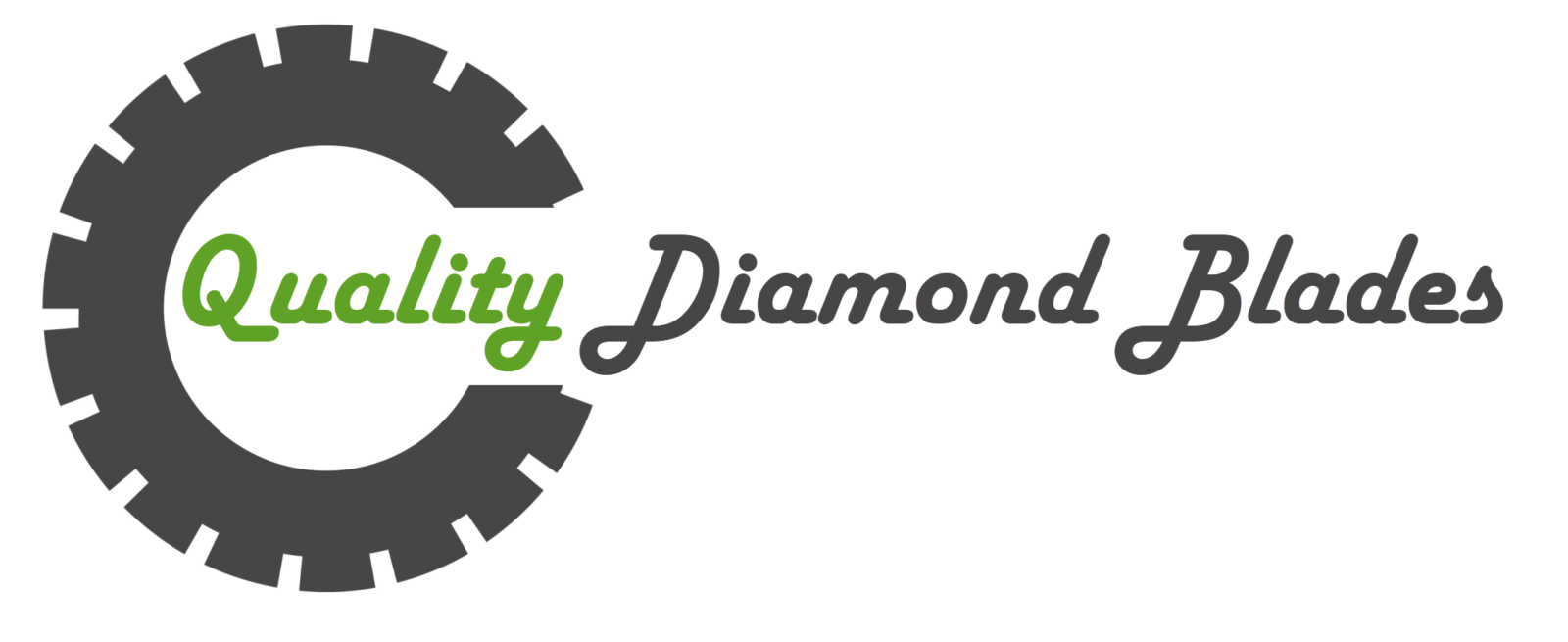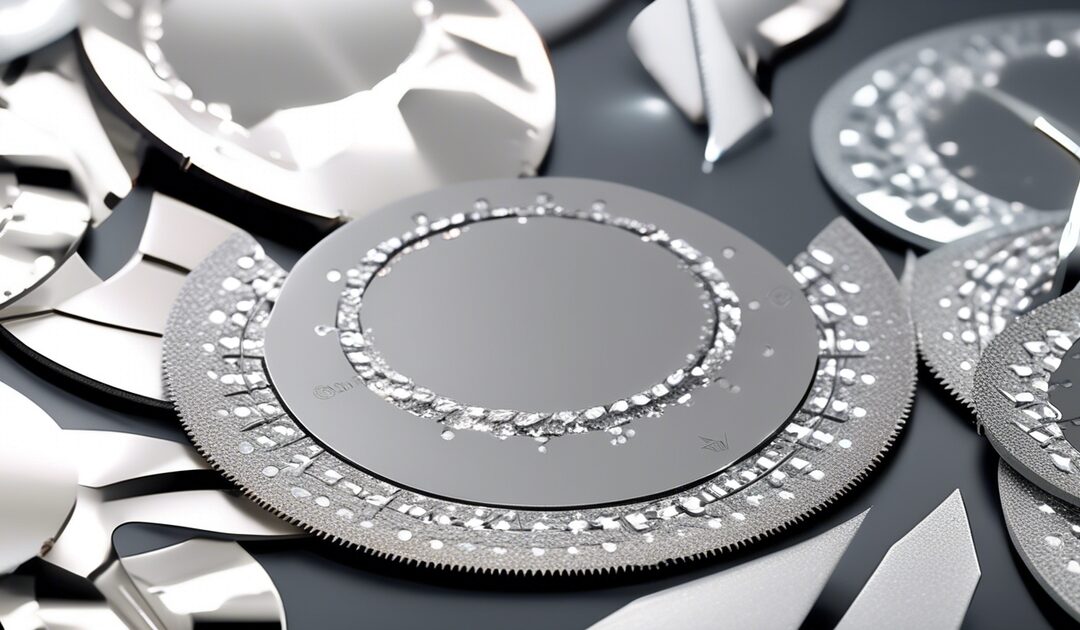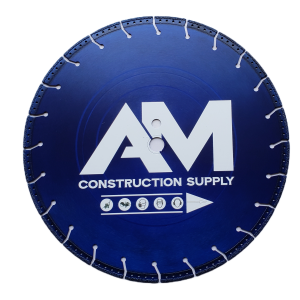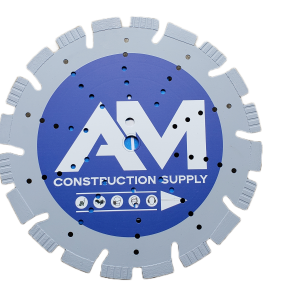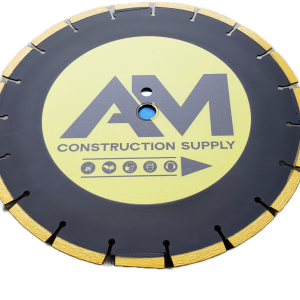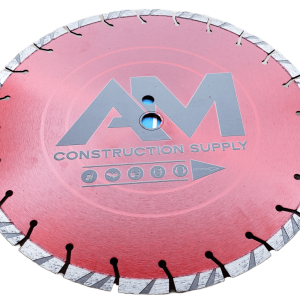Ever wondered how cutting speed impacts the longevity of diamond blades? Dive into the intricate dynamics and surface the energy of this crucial relationship with us. Can faster speeds really mean shorter blade life, or is there more to it than meets the eye? Unravel the mysteries behind optimizing cutting speeds for extended blade durability.
Key Takeaways
- Adjust Cutting Speed: Modify cutting speed based on material hardness to extend diamond blade lifespan.
- Regular Maintenance: Conduct routine inspections and cleanings to prolong the life of diamond blades.
- Invest in Quality: Opt for high-quality diamond blades to ensure durability and longer lifespan.
- Consider Material Type: Different materials require varying cutting speeds to optimize blade longevity.
- Learn from Case Studies: Explore real-world examples to understand the impact of cutting speed on blade lifespan.
- Consult Experts: Seek advice from professionals to select the right diamond blade for specific cutting applications.
Understanding Diamond Blades
Types and Uses
Diamond blades, made with diamonds, come in various types tailored for specific applications like concrete cutting, asphalt cutting, tile cutting, and stone cutting. Segmented blades are ideal for general purpose cutting, while continuous rim blades excel in providing chip-free cuts. Turbo rim blades offer faster cutting speeds, and electroplated blades are perfect for delicate materials.
- Segmented Blades: Suitable for general purpose cutting with excellent precision.
- Continuous Rim Blades: Ideal for chip-free cuts on delicate materials like tiles.
- Turbo Rim Blades: Known for faster cutting speeds in various industries.
- Electroplated Blades: Perfect choice for intricate cuts on fragile materials.
Each type of diamond blade offers distinct advantages such as precision cutting, durability, and speed. Segmented blades provide efficient material removal, continuous rim blades offer clean cuts without chipping, turbo rim blades ensure rapid cutting speeds, and electroplated blades deliver precise cuts on fragile materials.
Quality Attributes
Key quality attributes of diamond blades include diamond concentration, bond hardness, segment design, and blade diameter. Diamond concentration determines the blade’s cutting speed and lifespan, while bond hardness impacts the blade’s durability. Segment design influences the blade’s performance on different materials and cutting forces, and blade diameter affects the depth of cut.
- Diamond Concentration: Determines the sharpness and longevity of the blade.
- Bond Hardness: Affects the blade’s ability to withstand high-speed cutting.
- Segment Design: Influences the blade’s performance on various materials.
- Blade Diameter: Impacts the depth of cut and overall efficiency.
Premium diamond blades boast higher quality attributes compared to standard ones, resulting in superior cutting efficiency and longer lifespan. The increased diamond concentration, diamonds, optimal bond hardness, advanced segment design, cutting forces, and larger blade diameter contribute to enhanced performance across different applications.
Importance of Speed
Cutting speed plays a crucial role in determining the efficiency and productivity of diamond blades. Optimal cutting speed reduces heat generation during operation, minimizes tool wear, and decreases material wastage. Maintaining the right speed is essential to achieve precise cuts without compromising on blade longevity.
- Cutting Speed Efficiency: Critical for enhancing productivity and reducing operational costs.
- Heat Generation Reduction: Optimal speed minimizes overheating issues during cutting operations.
- Cutting Force Relationship: Maintaining appropriate speed levels ensures efficient material removal without excessive force application.
Cutting Speed Basics
Definition and Measurement
Cutting speed refers to the rate at which the blade edge moves during cutting, measured in surface feet per minute (SFM) or meters per minute (m/min). Accurate measurement is crucial for precise cuts and maximizing blade lifespan by considering cutting forces, tool, surface, and area.
Factors Affecting Speed
Various factors influence cutting speed, such as material hardness, feed rate, blade diameter, and the cutting machine’s horsepower. The workpiece material composition determines the optimal cutting speed for efficiency. Adjusting speed based on material characteristics is essential to minimize tool wear.
Material hardness significantly impacts cutting speed requirements. Higher hardness levels necessitate slower speeds to prevent overheating and premature blade wear. Feed rate also plays a vital role in determining the ideal cutting speed for maintaining cutting efficiency.
Blade diameter affects cutting speed due to the distance covered per revolution. Larger blades typically require lower speeds to maintain stability and prevent vibrations during cutting. Matching the appropriate blade diameter with optimal cutting speed enhances performance.
The horsepower of the cutting machine influences cutting speed by providing the necessary power for efficient operation. Higher horsepower enables faster cutting speeds, leading to increased productivity and reduced processing times. Balancing horsepower with cutting precision is crucial for optimal results.
Impact of Speed on Lifespan
Wear and Tear
Diamond blades undergo wear and tear as a result of prolonged use and high-speed cutting operations. This wear can manifest in various forms, including abrasive wear, where the blade edge dulls due to friction with the material being cut. Another common type is adhesive wear, where material from the workpiece adheres to the blade, causing it to lose its sharpness. fatigue wear occurs over time as the blade weakens from continuous use.
To minimize wear and extend the lifespan of diamond blades, proper maintenance is crucial. One effective strategy is ensuring proper lubrication during cutting operations. Lubricants help reduce friction, preventing abrasive wear and enhancing cutting efficiency. Implementing cooling techniques, such as using water or coolants, can also significantly reduce heat buildup and mitigate wear on the diamond blade.
Optimal Speed Range
The optimal speed range for diamond blades depends on several factors, including the material being cut, blade diameter, and machine specifications. Operating diamond blades below or above the recommended speed range can have significant consequences. When running below the optimal speed, cutting efficiency decreases, leading to longer processing times and potential damage to the workpiece.
Conversely, operating above the recommended speed range can result in accelerated wear on the diamond blade, shortening its lifespan significantly. To achieve optimal results in different cutting applications, it is essential to select the appropriate cutting speed range carefully. By adhering to manufacturer guidelines and considering factors like material hardness and machine capabilities, operators can maximize both cutting efficiency and blade longevity.
Maximizing Blade Lifespan
Proper Installation
Properly installing diamond blades is crucial for maximizing their lifespan. Begin by mounting the blade securely onto the cutting machine, ensuring it is centered and aligned with the cutting direction. Tighten the flanges securely to prevent any movement during operation. Safety precautions, such as wearing protective gear and following manufacturer guidelines, are essential.
Inspect the blade for any defects or damages before each use to avoid potential risks. Improper installation can lead to blade slippage, causing vibration and compromising cutting precision. These issues not only reduce blade lifespan but also pose safety hazards in the workplace.
Maintenance Tips
To prolong the performance and durability of diamond blades, regular maintenance is key. Clean the blades after each use to remove debris and buildup that can affect cutting efficiency. Inspect the blades for any signs of wear or damage, addressing any issues promptly to prevent further deterioration.
Storing diamond blades in a dry and secure environment is essential to prevent rusting and corrosion. Moisture exposure can weaken the blade material over time, reducing its effectiveness. Using blade guards and protective covers when the blades are not in use helps preserve their sharpness and prevents accidental damage.
Speed Adjustments
Adjusting cutting speed according to material hardness, feed rate, and blade condition is vital for optimizing cutting performance. Different materials require varying speeds to achieve efficient cuts without compromising quality. By adjusting speed settings accordingly, you can minimize material wastage and extend the lifespan of diamond blades.
Speed adjustments also impact cutting precision and blade wear rate. Maintaining an optimal speed ensures clean cuts with minimal chipping or edge damage while reducing wear on the blade itself. In situations where challenging materials or intricate cuts are involved, adjusting the speed can enhance overall cutting efficiency.
Quality Diamond Blades Advantage
Superior Performance
Diamond blades come in various designs, each showcasing unique features for enhanced cutting efficiency. For instance, blades with high diamond density offer exceptional cutting speed and precision. These blades incorporate advanced technologies like laser welding for improved durability.
In comparison, traditional diamond blades with lower diamond size may struggle to deliver the same level of performance. The evolution of diamond blade designs has revolutionized cutting applications, enabling faster and more precise cuts across various materials.
- High diamond density for superior cutting speed
- Innovative technologies like laser welding for enhanced durability
Extended Durability
To prolong the lifespan of diamond blades, proper maintenance practices are crucial. Controlling cutting speed and selecting the appropriate blade based on the material being cut are essential factors. For example, using a segmented rim blade for concrete cutting can significantly increase blade longevity.
Choosing the right diamond blade tailored to specific applications can prevent premature wear and ensure consistent performance throughout its lifespan.
- Proper maintenance practices
- Selecting the correct blade for material type
Customer Support
Reliable customer support from diamond blade manufacturers is vital for addressing user concerns effectively. Services such as technical assistance, warranty coverage, and troubleshooting guidance play a key role in ensuring customer satisfaction. Responsive support teams can promptly resolve issues and provide valuable insights into optimizing blade performance.
Customers benefit greatly from accessible support channels that offer quick solutions to their queries and concerns.
- Technical assistance for troubleshooting
- Warranty coverage for product reliability
Case Studies
Real-world Applications
Diamond blades play a crucial role in various industries, showcasing their versatility and efficiency. In construction, these blades are essential for cutting materials like concrete and asphalt accurately. Moreover, in manufacturing, diamond blades are used to cut metals with precision and speed. The mining industry also benefits from diamond blades for cutting hard rocks efficiently.
In a recent project in the construction sector, a company utilized diamond blades to cut through reinforced concrete structures during a building renovation. The project’s success was attributed to the high cutting speed and durability of the diamond blades, which significantly reduced downtime and enhanced productivity. This case study highlights how diamond blades can streamline cutting processes in demanding environments.
Another example comes from the manufacturing industry, where a workshop employed diamond blades to cut intricate patterns on metal sheets for automotive parts production. The precision and longevity of the diamond blades enabled the company to achieve consistent quality outputs while minimizing material wastage. Such success stories demonstrate the critical role of diamond blades in ensuring efficient and accurate cutting operations across different sectors.
- Diamond blades are versatile tools used in construction, manufacturing, and mining.
- These blades can cut materials like concrete, metal, ceramics, and composites effectively.
Success Stories
Professionals and companies worldwide have reaped significant benefits from incorporating high-quality diamond blades into their cutting operations. One notable success story involves a construction firm that overcame challenges in cutting dense granite blocks by using advanced diamond blade technology. By implementing innovative cooling techniques and optimizing cutting speeds, the company achieved precise cuts with minimal blade wear.
In another instance, a metal fabrication company improved its production efficiency by switching to premium diamond blades for cutting stainless steel components. The transition not only resulted in higher throughput rates but also reduced maintenance costs due to the extended lifespan of the blades. These success stories underscore how investing in quality diamond blades can lead to tangible improvements in operational performance and cost savings.
- Professionals have achieved remarkable results by using high-quality diamond blades.
- Innovative solutions and optimized cutting processes have led to increased productivity and cost savings.
Choosing the Right Blade
Material Considerations
When selecting diamond blades for cutting, it is crucial to consider the material properties of the workpieces. The hardness, abrasiveness, and thickness of the material significantly impact the choice of blade type and cutting speed. Matching these characteristics ensures optimal cutting performance and extends the blade’s lifespan.
To achieve efficient cutting results, match diamond blade characteristics with specific material requirements. For instance, when cutting dense and hard materials like granite, a segmented blade with high diamond concentration works best due to its ability to withstand abrasion. On the other hand, softer materials like asphalt require a continuous rim blade for smooth cuts without chipping.
Consideration of material properties is essential in preventing premature blade wear. For instance, using a general-purpose blade on highly abrasive materials can lead to accelerated wear and reduced cutting efficiency. Understanding these factors helps saw operators select the most suitable blade for each cutting application.
Speed Requirements
Different materials demand specific cutting speeds when using diamond blades to ensure optimal performance. Concrete, asphalt, granite, and ceramic tiles each require varying speeds based on their hardness, density, and composition. Operating at incorrect speeds can result in inefficiencies and shorten the lifespan of the blades.
For concrete cutting, a higher speed is often necessary due to its density and hardness. In contrast, softer materials like asphalt require lower speeds to prevent overheating and premature wear of the diamond segments. Adjusting the cutting speed according to material properties enhances both efficiency and blade longevity.
Incorrect speeds can have detrimental effects on cutting operations. For example, using excessive speed on ceramic tiles may cause thermal damage or cracking due to friction-generated heat. Conversely, operating at too low a speed can lead to slow progress and inadequate cut quality.
Expert Tips and Tricks
Speed Control
Speed control mechanisms are crucial in cutting machines to regulate cutting speed effectively. By adjusting the cutting speed, operators can optimize the performance of diamond blades. Variable speed control options offer flexibility in adapting to different materials and cutting conditions. Implementing these features enhances cutting precision, reduces tool wear, and boosts overall efficiency.
To ensure optimal blade performance, it is essential to have a precise control over the cutting speed. Variable speed control options allow operators to adjust the cutting speed based on specific material properties and cutting requirements. This adaptability results in improved cutting quality and prolonged blade lifespan.
- Advantages of Speed Control:
- Enhanced cutting precision
- Reduced tool wear
- Improved overall efficiency
Preventive Maintenance
Preventive maintenance plays a vital role in extending the lifespan and maintaining the performance of diamond blades. Regular maintenance routines are key to preventing unexpected blade failures, minimizing downtime, and avoiding costly replacements. By adhering to a preventive maintenance schedule, operators can maximize the longevity of their tools.
Implementing a proactive approach towards maintenance involves conducting routine inspections, cleaning procedures, lubrication tasks, and alignment checks. These preventive measures help in identifying potential issues early on, ensuring that the blades remain in optimal condition for longer periods.
- Benefits of Preventive Maintenance:
- Prolonged lifespan of diamond blades
- Minimized downtime due to unexpected failures
- Cost-saving by avoiding expensive replacements
Closing Thoughts
You’ve now delved deep into the world of diamond blades and cutting speeds. Understanding how these elements interact is crucial for maximizing the lifespan of your tools. By adjusting the speed according to the material and blade type, you can significantly enhance efficiency and durability. Remember, it’s not just about going fast but finding that sweet spot where performance meets longevity.
In your future projects, apply the insights gained here to select the right blade, optimize cutting speeds, and make informed decisions. Your tools are your allies in craftsmanship, so treat them well, and they’ll serve you faithfully. Keep experimenting, keep learning, and keep pushing boundaries in your work. Now go out there and conquer those cuts like a pro!
Frequently Asked Questions
How does cutting speed affect the lifespan of diamond blades?
Cutting speed directly impacts a blade’s lifespan. Excessive speed can cause overheating and premature wear, reducing the blade’s longevity. Optimal speed ensures efficient cutting without compromising the blade’s durability.
What are the advantages of using quality diamond blades over cheaper alternatives?
Quality diamond blades offer superior performance and durability compared to cheaper options. They provide precise cuts, longer lifespan, and better cost-effectiveness in the long run by reducing the need for frequent replacements.
Can you share some expert tips for maximizing the lifespan of diamond blades?
Experts recommend using the correct blade for specific materials, maintaining proper water flow to cool the blade during cutting, avoiding excessive pressure, and regularly cleaning the blade to prevent debris buildup—all these practices contribute to extending a blade’s lifespan.
How do I choose the right diamond blade for my cutting needs?
Consider factors like material type, hardness, thickness, and your specific cutting requirements when selecting a diamond blade. Consult with professionals or refer to manufacturer guidelines to ensure you choose a blade that matches your project needs perfectly.
Are there any real-life case studies demonstrating the impact of cutting speed on diamond blade lifespan?
Real-life case studies often showcase how adjusting cutting speeds can significantly affect a diamond blade’s longevity. By following best practices and understanding these examples, users can make informed decisions to optimize their cutting processes effectively.
